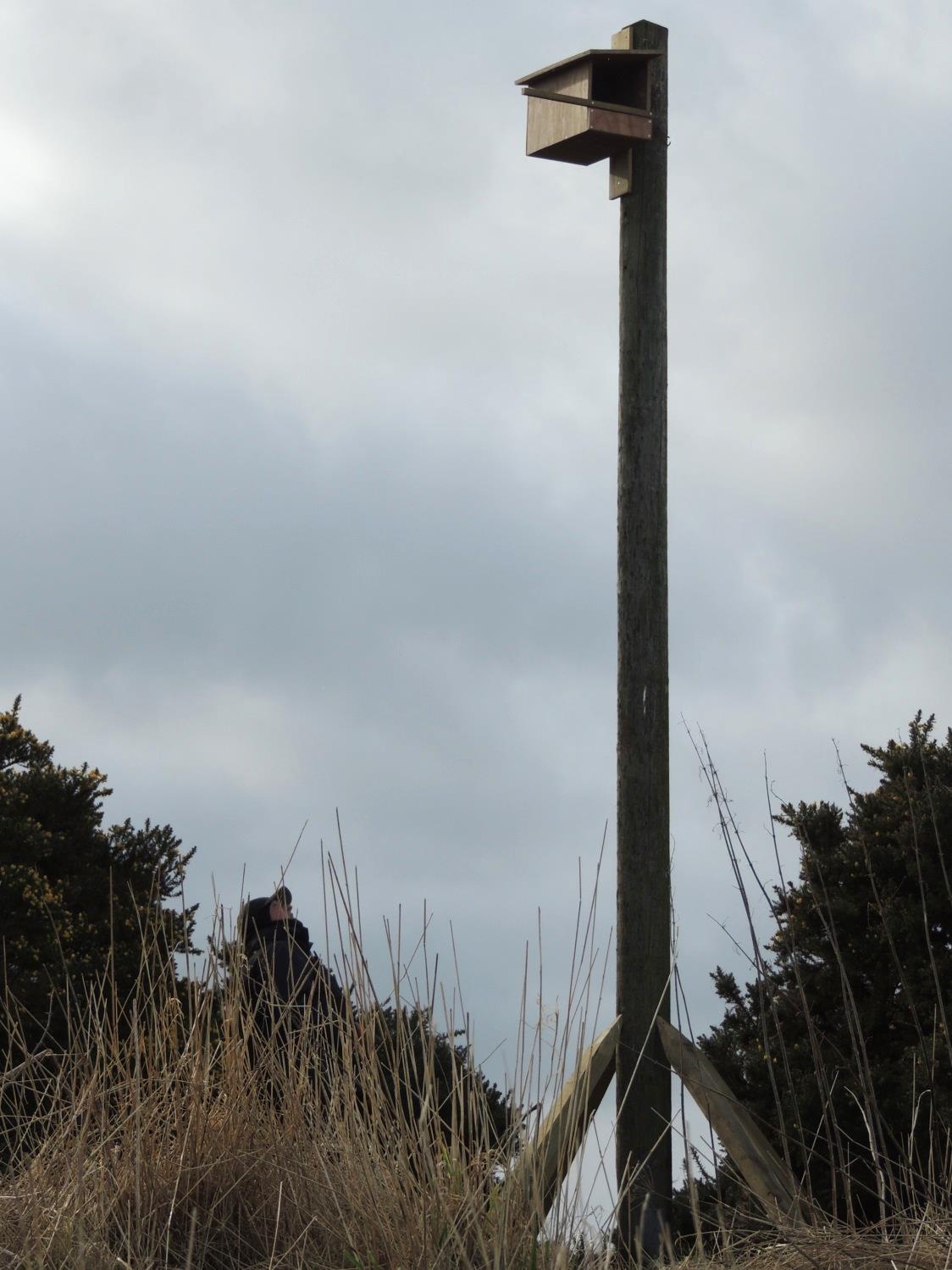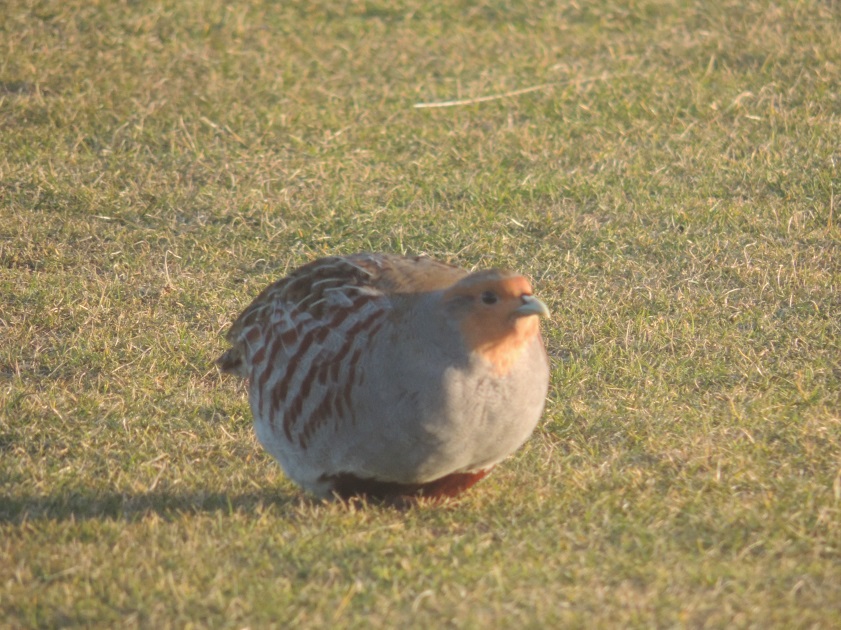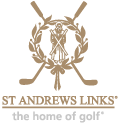
Kestrels are the birds you see hovering 5-20 metres above the rough and it's hoped that we'll attract a nesting pair of these Amber listed birds to the Links.
Kestrels at The Castle
Fresh from their final four position in the recent Enviro Awards, The Castle team have designed and erected this fantastic kestrel nesting box which can be seen to the pond area of the course. Kestrels are the birds you see hovering 5-20 metres above the rough and it’s hoped that we’ll attract a nesting pair of these Amber listed birds to the Links so fingers crossed all!
The strong winds of the past week have brought down one of our pine trees! All is not lost however – the tree, which was growing to the far end of the golf courses, has now been recycled into a habitat for ground nesting birds, stoats or saprophytes which are wood dwelling critters such as the hoverfly and many types of beetle. The trunk was chain sawed into metre lengths and stacked as eco-piles whilst the leggy green parts were chipped and turned into compost. The upturned roots may even be used as an area for hibernation for hedgehogs too.
One or two interesting finds exposed themselves whilst we were recycling the tree including this trail of a leaf miner moth on a bramble leaf. This moth lays her eggs on the underside of the bramble leaf where the larvae hatch to subsequently eat its way through the inside of the leaf. As the larvae develops (note the tunnel becomes wider) it arrives at a point where It decides to pupate and turn into a moth – simple!
On the wildlife sightings front, the snow buntings have finally arrived with around 20 being seen on West Sands around to Guardbridge and the surrounding areas. Pintails have had one of their best seasons in terms of numbers with 77 being seen on the estuary. It’s great to see the family of white-tailed sea eagles are still around too – these are known as the flying barn door and when you see one in flight it is easy to see why!
Another bird which has been in decline of late is the grey partridge. This one was photographed taking seed from the freshly divoted 17th tee on the New Course. We have around 15 grey partridge on the Links with a similar amount on The Castle Course and they seem to like our managed rough, heather and gorse environs.
The American mink which was noted a few weeks back seems to have moved on which I have to say is a good thing. These critters can become a serious problem to the UK’s wildlife as they will eat practically anything they find, including the moorhen family we have on the Eden Course pond!
All four greenkeeping teams have been continuing with their respective gorse management this past fortnight but the birds have started to sing so it won’t be too long before we have to leave this task for a while. Many birds including wren, linnet and blackbird use the gorse as a nest site so we will be vigilant in our approach to gorse management in the run-up to spring.
Words by James Hutchinson, Environmental Officer
Related Posts
Subscribe below for email updates on our latest posts
Subscribe





